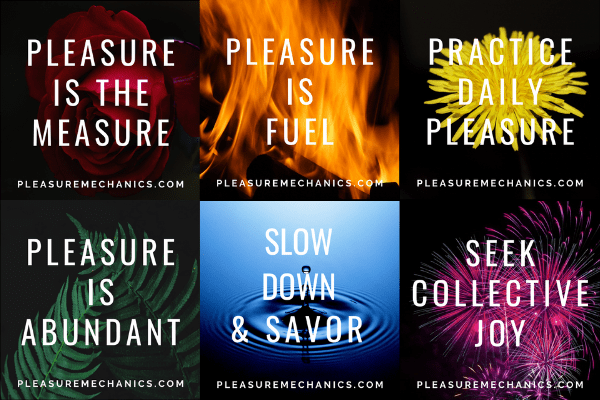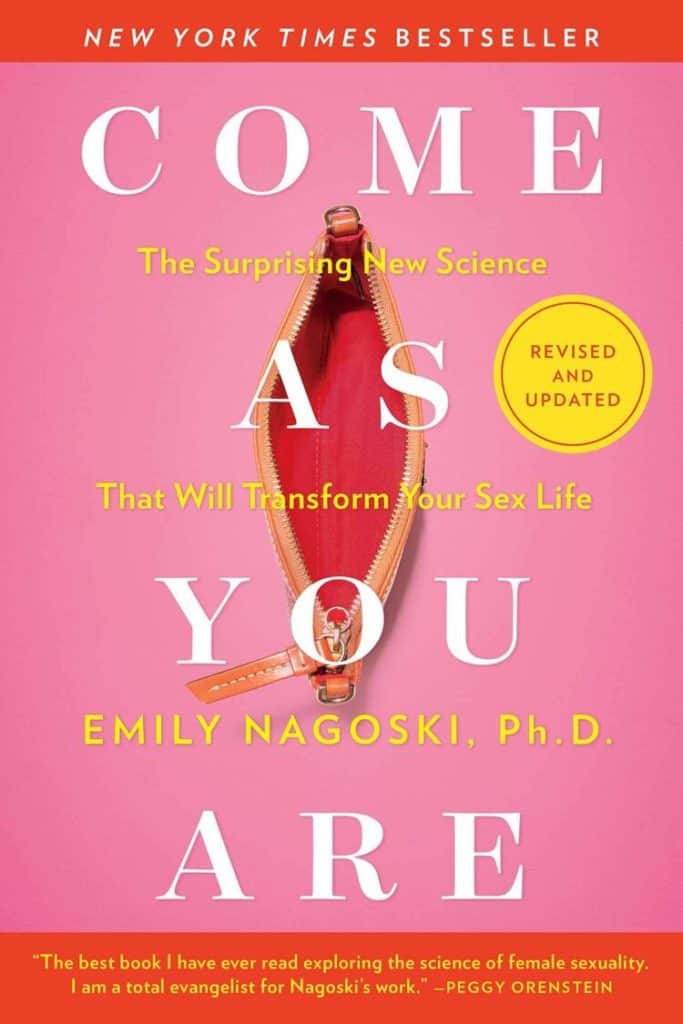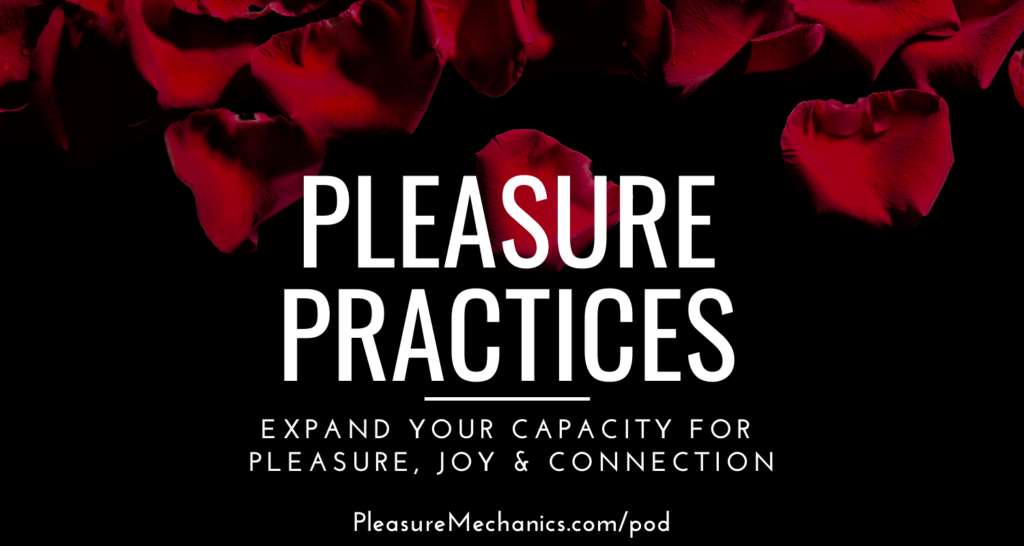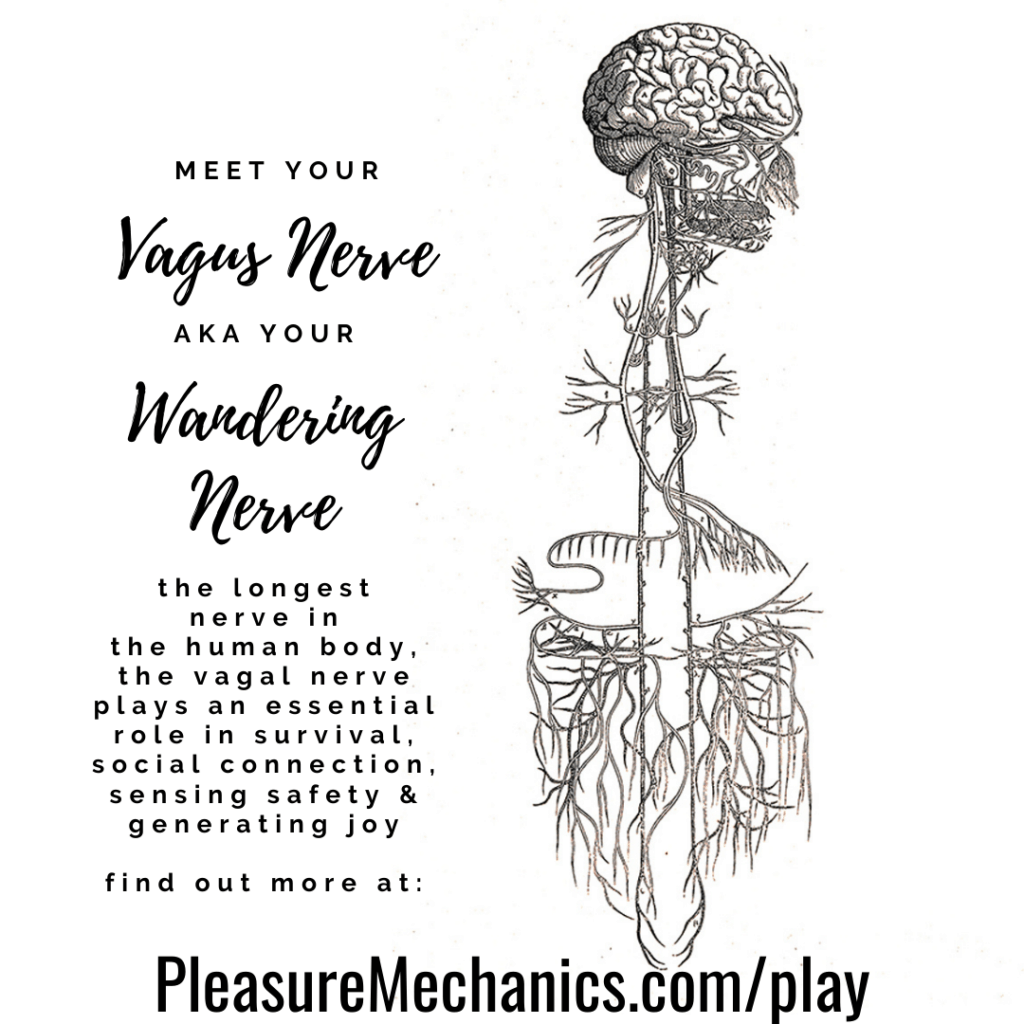
“Pleasure Is The Measure! Of sexual wellbeing, I mean. Pleasure. Not how much you want sex, not how much sex you have, or with whom, or what you do, or where or how often. The key to assessing your own sexual wellbeing is not how much you want sex, but how much you like the sex you are having. Pleasure is the measure.” ~ Emily Nagoski, Ph.D.
Pleasure Is The Measure means that the only standard or aspirational goal to strive for is your pleasure, on your own terms. Does it feel good to you? That means you are doing it right!
Far too much of our attention and awareness is given over to harmful standards and oppressive norms that tells us we are broken – when really we are all quite normal and operating within a healthy range of the human experience.
Pleasure Is The Measure can remind you that you are normal, you are not broken and your pleasure and joy matters.

In 2017 we designed a set of 6 PleasureMechanics stickers and wrote to Emily Nagoski for permission to use this phrase she had coined in 2016. She graciously agreed and in the years since Pleasure Is The Measure has become a community anthem amongst the growing ranks of Pleasure Activists, Erotic Educators and sex positive therapists and doctors who all believe that Pleasure Is The Measure!
What does #PleasureIsTheMeasure mean to you?
Join our newsletter community below (or better yet, enroll in our free online course!) and you’ll be in direct email communication with us – we’d love to hear what is on your mind!




